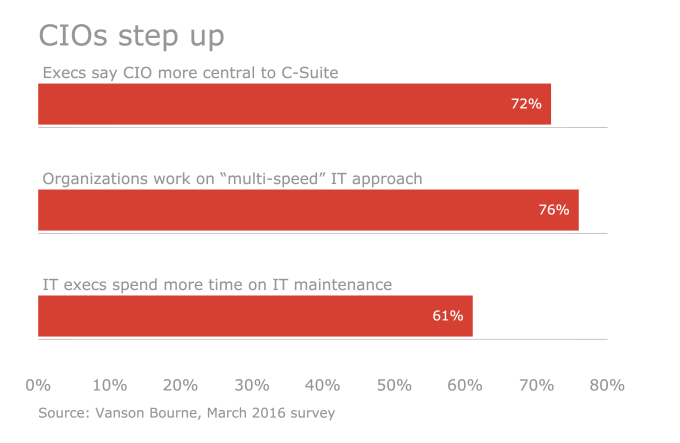I am once again honored as one of the 50 women in the 2019 class of Health Data Management’s Most Powerful Women in HIT. I know and have worked with many of these executive leaders who, as my peers, share my passion to advance better health for all. I am honored to be part of this exceptionally talented group.
And, it brings to mind the topics of “power” and “success,” what it means to be powerful and how success can guide us. What does it take to become a powerful leader in today’s business world?

I’d like to offer the following characteristics:
Love, care and respect: A powerful leader cares deeply about solving problems that matter, and treating those around her with love and respect. She teaches people how to treat her, in part, by how she treats others. I firmly believe that leaders who treat people with respect have a better chance of earning respect from others. There’s a great new business book out on this very topic that I encourage you to read: The 10 Principles of a Love-based Culture.
Confidence: It takes confidence to move ahead in life. A belief in yourself will power you on. In my dark times, I try to remember that growth has always come to me when I’ve been told “no” or a door has closed. These times are profoundly difficult, and it’s very hard to remember this advice when I’m in the midst of a defeat or a setback. What helps me is reaching deep inside to summon my inner confidence to go on. Michelle Obama has a perfect quote from her recent book: “You are more than enough. You have always been and you will always be. And, I can’t wait for you to see that.”
Resilience: Defeat and setbacks are part of life. As such, they’re an opportunity to exercise my resilience. Think of resilience like a rubber band. Rubber bands are stretched and, when released, re-form in their intended shape. That’s resiliency.
Our day-to-day lives capture the bounce-back reality of resilience. It may be comments in a business conversation, disagreements among board members, or any number of situations where words, actions, and ultimately, outcomes demand toughness to address the situation and keep moving.
And, it’s incredibly important to periodically release the tension. Just like a rubber band, we can overstretch ourselves, becoming brittle and breakable. When I’m tired and feeling a bit defeated, I know that my resiliency is low. That’s when I take a break. Just stare out the window, call a friend, take a day off—whatever I need. I have come to realize that caring for myself builds resiliency.
Listening: Powerful leaders know how to listen. Not just the words, but the space between the words, and the meanings running as an undercurrent. Plus, reflective listening is a key skill. This is exemplified through phrases such as: “If I hear you correctly, you are saying…”
A leader who does not understand what people are saying won’t be a leader for long. As the Greek philosopher Epictetus suggested, “We have two ears and one mouth—for a good reason.”
Preparation: Do your homework. Be sure of your facts. Seek multiple points of views because, I can promise you, the truth rarely resides in just one. A powerful leader is one who comes prepared. There are two excruciating memories I have of coming into encounters unprepared. I hadn’t done my homework, and I was—rightfully—challenged. Believe me, once was painful enough. That second encounter became a “never again” watershed moment for me. Now, I prepare. And, if an encounter comes up so rapidly there’s no time for preparation, I keep my mouth shut and my ears open. In other words, I listen and seek to understand. Only then do I engage.
Defining success in 2019
A 2018 PWC survey found that women are “determined yet frustrated.” Business leaders, per the survey, must focus on “transparency and trust, strategic support, and tackling challenges with balancing life, family care and work.” Women still face “bias, glass ceilings, glass cliffs discrimination, toxic cultures and racism.”
Leadership roles: In the workplace, only about one in five C-suite leaders is a woman, and one in 25 is a woman of color, according to the 2018 Women in Work research from McKinsey and Company and Leanin.org.
Gender pay gap: The gender pay gap still exists with women earning about 85% of what men took home for their paychecks in 2018. This data from Pew Research Center analyzed media hourly earnings of both full- and part-time workers in the U. S.
A new approach: I like the words of Payam Akhavan, professor of international law at McGill University in Montreal, Canada. In a 2017 Huffington Post article—Men, Women, and a New Definition of Success, he suggests the differences matter in how men and women approach business.
“But what is important is that those women bring with them feminine ideals instead of emulating the behavior of men. The inclusion of women is not just about statistics but about values that emphasize cooperation over competition, empathy over domination, and dialogue over violence…
“…If we are truly strong, on the inside…then we don’t have to worry so much about stupid things like feeling important because of our material possessions and social status. It is only with this new definition of success, based on our shared humanity, that we can build a better world.”
Building a better world: I am indeed proud to be part of this cohort of accomplished, powerful women who champion better healthcare and patient outcomes. We continue each day, in our respective work settings, to look at how we can use our skills, compassion and knowledge to build a better world for all of us now and for those leaders to follow.

